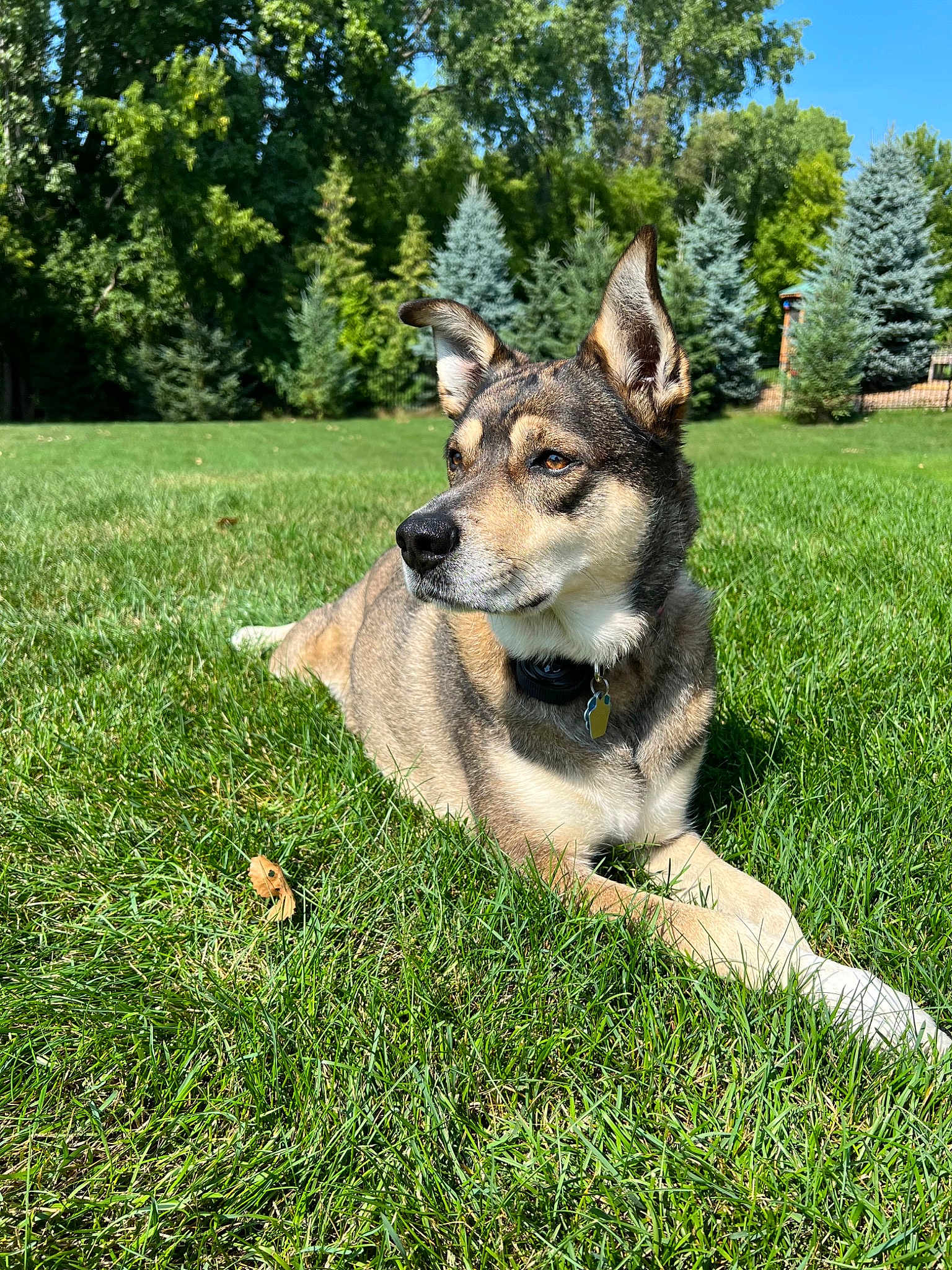"If you're looking for a canine companion who is both a fearless hunter and a loyal family member, look no further than the Swedish Elkhound. Known for its intelligence, versatility, and spirited attitude, this breed is a blend of ancient tradition and modern affection, making it an excellent choice for dog lovers around the world."
Personality and Behavior of the Swedish Elkhound
The Swedish Elkhound, also known as the Jämthund, is renowned for its courageous demeanor and warm companionship. This breed was initially developed for hunting large game, such as moose and bears, in the dense Scandinavian forests. Because of this background, the Swedish Elkhound possesses a natural combination of bravery and alertness that is quite rare. They are always on the lookout, ready to take action when the situation demands it.
Despite their robust hunting instincts, Swedish Elkhounds are incredibly loyal and gentle with their families. They thrive on human interaction and love to participate in family activities, whether it's a hike in the mountains or a casual game of fetch in the backyard. This breed forms strong bonds with its human companions and is known to be particularly good with children, owing to its patience and protective nature.
Swedish Elkhounds are also highly intelligent and independent thinkers. This intelligence, coupled with their independent streak, can sometimes translate to stubbornness. However, these traits also make them excellent problem-solvers and highly trainable dogs when approached with the right methods. With the proper training, a Swedish Elkhound can excel in various tasks, be it agility, tracking, or even performing tricks for the family.
The breed's strong prey drive and keen senses make it essential for owners to provide ample mental and physical stimulation. Regular exercise and interactive play are crucial to keeping a Swedish Elkhound happy and healthy. Left under-stimulated, they might find their excitement in less desirable behaviors, such as digging or excessive barking.
"In Sweden, the Swedish Elkhound was historically used not only for hunting but also for protecting homesteads from wild predators. This multi-functional role required a dog that was brave, resilient, and highly loyal—qualities that are still very much evident in the breed today."
Meanings, History and Origins of the name Swedish Elkhound
The Swedish Elkhound's name offers a straightforward glimpse into its purpose and origin. The term "Elkhound" directly translates to "elk" (or moose) and "hound," indicating the breed's primary role in hunting large game. The Swedish part of the name denotes the breed's Scandinavian roots, specifically hailing from the region once referred to as Jämtland.
Historically, the Swedish Elkhound has been an indispensable part of the Scandinavian hunting tradition for centuries. Records and folklore that date back hundreds of years mention a dog remarkably similar to the modern Swedish Elkhound, aiding in hunting expeditions in the rugged terrains of Sweden and Norway. This long history has endowed the breed with a rich cultural heritage, embedding it firmly in the tapestry of Scandinavian traditions.
Despite its ancient roots, the Swedish Elkhound was officially recognized as a distinct breed relatively recently. In 1946, the breed was formally acknowledged by the Fédération Cynologique Internationale (FCI), thanks in no small part to the advocacy of Swedish hunters and enthusiasts who wished to preserve its purity and working capabilities.
The Swedish Elkhound's role has evolved over time, from being a specialized hunting dog to becoming a versatile companion animal. This adaptability has ensured its continued relevance and popularity beyond the forests of Scandinavia. In modern times, the breed is cherished not only for its hunting skills but also for its companionship and the unique charm it brings to households around the world.
Popularity of the Swedish Elkhound
The Swedish Elkhound enjoys a niche but growing popularity across the globe. In Sweden and neighboring Scandinavian countries, the breed has always held a special place due to its historical ties and practical uses. It is a symbol of national heritage and a testament to the region's hunting culture, often celebrated in rural communities and among hunting enthusiasts.
In English-speaking countries, the Swedish Elkhound has seen a gradual rise in popularity. This is largely attributed to a growing interest in unique and lesser-known breeds that offer something different from the more common family dogs. The Swedish Elkhound appeals to those looking for a dog with a robust character, excellent versatility, and a touch of exotic heritage. Furthermore, the breed's adaptability to various living environments, from countryside homes to suburban settings, has made it an attractive option for many prospective dog owners.
Globally, the Swedish Elkhound has garnered attention in countries like Germany, France, and Japan, where dog shows and breed clubs highlight its qualities and promote its characteristics. These international platforms have helped establish a dedicated following for the breed, with enthusiasts appreciating the Swedish Elkhound’s unique traits, such as its stamina, intelligence, and unwavering loyalty.
Health and Care of the Swedish Elkhound
Swedish Elkhounds are generally robust dogs, but like all breeds, they can be prone to certain health issues. Common problems include hip dysplasia, a condition affecting the hip joints, and progressive retinal atrophy (PRA), which can lead to vision loss. Regular veterinary check-ups, along with genetic testing of breeding stock, are essential to mitigate these concerns.
Diet plays a crucial role in maintaining the health of a Swedish Elkhound. A well-balanced diet rich in proteins, healthy fats, and essential vitamins is necessary to support their high energy levels and muscular build. Given their history as working dogs, they thrive on diets that resemble their ancestral feeding patterns, focusing on quality, meat-based ingredients.
Exercise is another critical component of their care routine. Swedish Elkhounds require daily physical activity to keep them physically fit and mentally stimulated. Activities such as long walks, hikes, and outdoor play sessions are excellent ways to burn off their energy. Engaging them in activities that simulate hunting, like tracking and scent games, can also be beneficial in keeping their minds sharp and fulfilling their hunting instincts.
Regular grooming is relatively straightforward for this breed. The Swedish Elkhound has a dense double coat that sheds seasonally. Brushing their coat a few times a week can help manage shedding and keep their fur healthy. Additionally, routine checks on their ears, teeth, and nails are necessary to prevent common issues such as infections or dental problems.
Training and Education of the Swedish Elkhound
Training a Swedish Elkhound can be both a rewarding and challenging experience. As highly intelligent dogs, they are quick learners but may also exhibit a stubborn streak. Early socialization and consistent, positive reinforcement techniques are key to successfully training this breed. Starting training during puppyhood can help establish good behavior patterns and make the learning process smoother.
Obedience training is fundamental for Swedish Elkhounds, given their independent nature. Basic commands such as sit, stay, and recall should be mastered early on. Positive reinforcement methods, including treats, praise, and play, work best with this breed. Harsh or punitive training techniques can lead to resistance and should be avoided.
Swedish Elkhounds excel in advanced training and dog sports. They are natural athletes and perform well in activities like agility, obedience trials, and tracking events. This kind of training not only hones their skills but also provides the mental and physical stimulation they crave. Interactive puzzle toys and scent games are other great ways to keep them engaged and mentally stimulated.
Owners should be prepared for a gradual training process, as Swedish Elkhounds can sometimes take longer to fully grasp commands and routines. Patience and consistency are crucial. It's also beneficial to expose them to different environments, people, and other animals during their formative months to build a well-rounded and confident dog.
Choosing the right dog depends on various factors, including lifestyle, activity level, and personal preferences. For those who enjoy outdoor activities, have an active lifestyle, and appreciate a loyal and intelligent companion, the Swedish Elkhound might just be the perfect match.
The fascinating blend of history, loyalty, and versatility makes the Swedish Elkhound a breed worth considering. Our KingPet contests frequently feature Swedish Elkhounds, showcasing their remarkable attributes and endearing personalities. If you're searching for a breed that embodies tradition, adventure, and affectionate companionship, the Swedish Elkhound is a splendid choice for a dog.


